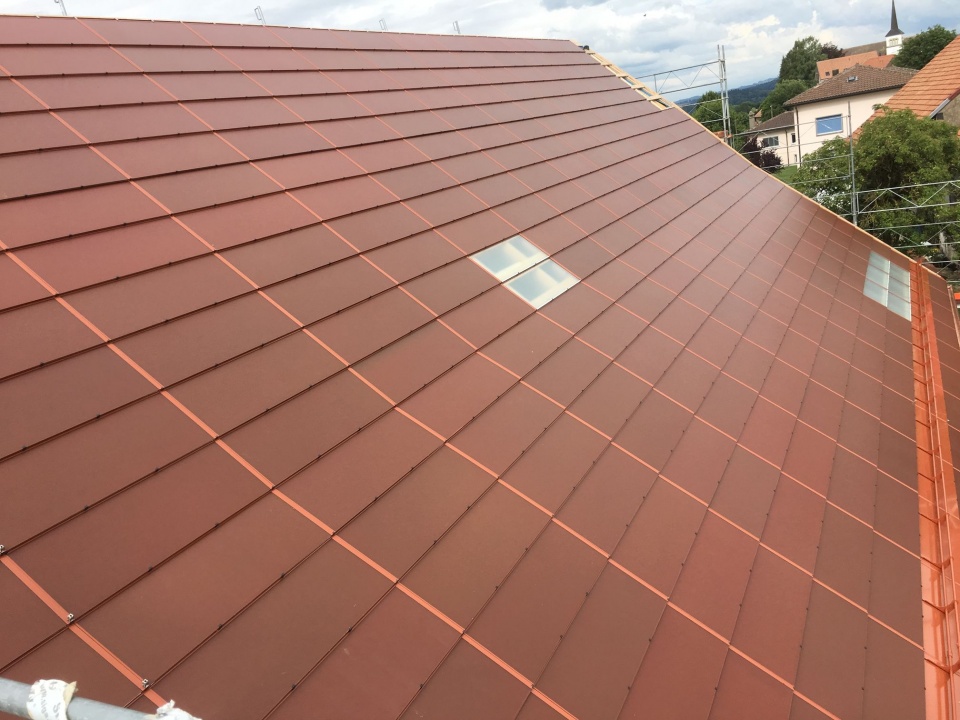Integrating photovoltaic solar panels onto historic protected sites has often been a problem without a real solution. However, an important milestone has been reached in the village of Ecuvillens, located in the Swiss canton of Fribourg, where terracotta-red solar panels have been installed on the roof of a farmhouse. Developed by CSEM (Swiss center for microelectronics and microtechnologies) and ISSOL Suisse, this technology allows the farmhouse to fully retain its original character. This pilot project was made possible thanks to the relevant government agencies (the Department of Energy and the Department of Cultural Property) and the support provided by the Swiss Federal Office of Energy (SFOE) and ÜserHuus, as well as the commitment of various partners.
In recent years, CSEM has proposed several new transformative approaches for photovoltaic panels, in an important effort in reconciling energy, esthetics, and historic preservation objectives. One of these technological innovations is currently receiving its first practical application: as part of a pilot project, a new generation of solar modules were installed on the roof of a farmhouse in Ecuvillens belonging to Mr. Alexandre Galley. The solar panels are based on standard crystalline solar cells, but present a homogeneous aspect. Its coloring resembles terracotta tiles, allowing the farmhouse to fully retain its original character.

This pilot project was made possible with the support of the relevant government agencies—the Department of Energy and the Department of Cultural Property—as well as the support provided by the Swiss Federal Office of Energy. The project was completed thanks to ISSOL Suisse, which provided 230 m2 of solar panels, as well as the Lausanne-based company Solstis, which handled their installation. This accomplishment greatly expands the development potential of this technology, which serves as an important resource for achieving the objectives of Switzerland's 2050 Energy Strategy.


Photovoltaic solar development has experienced phenomenal growth these last few years with no end in sight, particularly since the 2050 Energy Strategy was approved by the Swiss people. For example, installed surface area in the canton of Fribourg has seen practically a twenty-fold increase over the last ten years.
This new pilot installation is expected to generate 28 MWh of electricity per year, around 20% less than traditional photovoltaic technology. With its 230 m2 of surface area, the installation in Ecuvillens supplies enough electricity to power eight four-person households, which easily covers the farmhouse's needs. The remaining output will be returned to the grid.
Studies for this pilot project began in 2014, and it would not have been possible without the commitment of the owner, the invaluable cooperation of the CSEM, the commitment of the companies involved, the support and financial assistance provided by the Department of Energy, the SFOE and ÜserHuus, as well as the receptiveness of the historic preservation authorities.
In the near future, we will see whether the model developed in Ecuvillens gets replicated on Swiss and European protected sites in order to expand access to this technology ever further, which will play a major role in achieving the objectives of the national energy policy.



Hello
This sounds very good to all owners of Grade II listed properties who also own a large and unused roof area.
When can the conventional use be expected?
With kind regards,
Ralf Wulfert